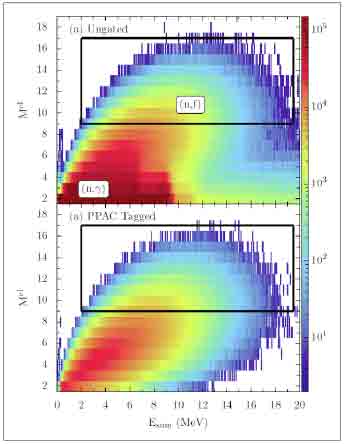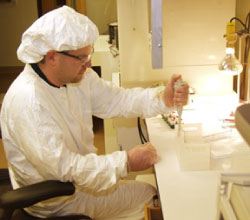Nuclear and Radiochemistry
We provide vital radiochemical and radioanalytical capabilities to a diverse range of basic research and applied problems facing the nuclear enterprise
Contact Us
- Group Leader
- Will Kinman
- Deputy Group Leader
- Kristy Nowak-Lovato
- Deputy Group Leader
- Reg Rocha
- Group Office
- (505) 667-4546
Areas of basic and applied research
We specialize in radiochemistry, radioanalytical methods development, materials characterization, nuclear chemistry and physics, and actinide chemistry
The Nuclear and Radiochemistry group applies vital expertise in radiochemistry, radioanalytical chemistry, radiochemical debris diagnostics, nuclear chemistry, radiation spectrometry and mass spectrometry to a diverse range of basic research and applied scientific challenges facing the nuclear enterprise.
Basic research is conducted in the areas of radiochemistry, radioanalytical methods development, materials characterization, nuclear chemistry and physics, and actinide chemistry. Programmatic work supported by C-NR includes maintenance and stewardship of the nuclear stockpile, nuclear forensic science, treaty monitoring, international safeguards, global security, nuclear non-proliferation, and bioassay monitoring.
C-NR addresses immediate to long-term mission needs for sponsors and has established capabilities for handling and characterizing radiological materials over a wide range of radioactivity levels.
Current major sponsors
Federal agencies
- National Nuclear Science Administration
- Department of Defense
- Department of Homeland Security
- Department of State
Additional sponsors
- Strategic partnership agencies
- LANL institutional support
- Competitive internal funding


- Left: Measuring the neutron capture cross-section of 239Pu helps support of the Advanced Reactor Concept program, a DOE program considering the next generation of reactor designs.
- Right: Technologist loading samples for thermal ionization mass spectrometry.





